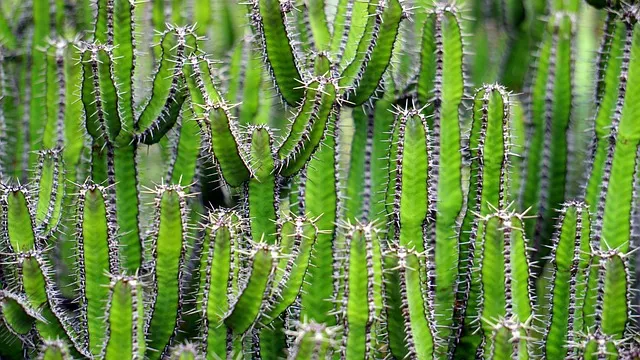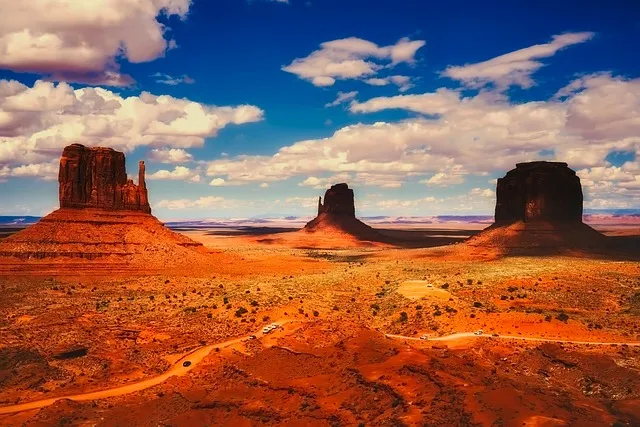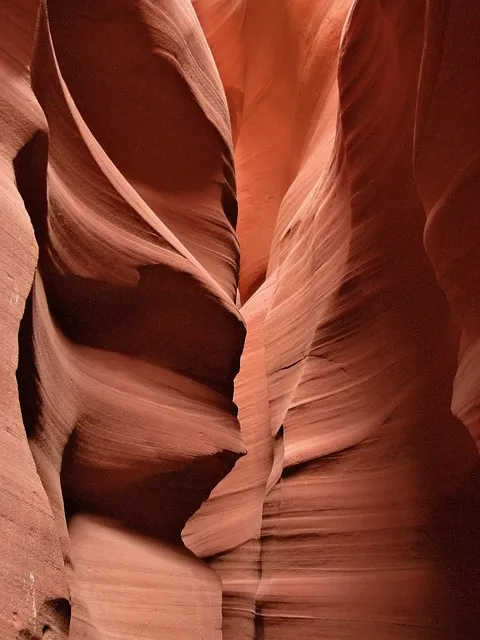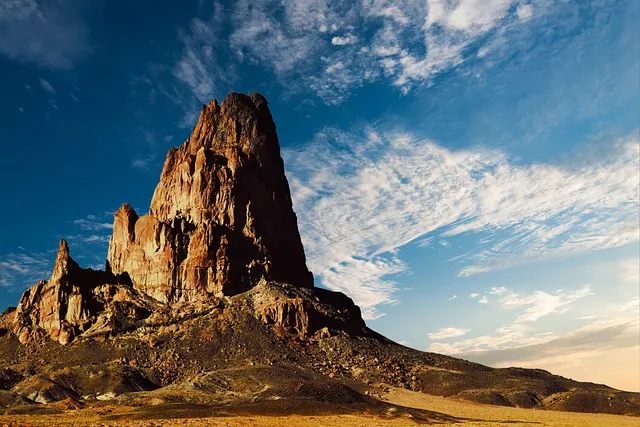Arizona's deserts, including the iconic Sonoran, Mojave, and Chihuahuan Deserts, are teeming with diverse ecosystems and unique wildlife, defying the myth of barren landscapes. The state boasts rich biodiversity, with the Sonoran Desert featuring protected saguaros, prickly pear cacti, and cholla cacti, all adapted to thrive in arid conditions. Phoenix integrates urban living with desert scenery, offering green spaces and a strong arts scene that includes museums and cultural events like First Friday. Arizona's major cities, Phoenix and Tucson, are hubs of cultural activity, showcasing contemporary and traditional art forms. Geologically, Arizona is home to natural wonders such as the Grand Canyon, Petrified Forest National Park, and Monument Valley, offering insights into ancient geological processes and contributing to the state's overall natural beauty and ecological significance.
Explore the captivating diversity of Arizona’s landscapes, from the vibrant ecosystems of the desert to the lush urban environments that offer a unique harmony between nature and metropolitan life. Delve into the Sonoran Desert’s iconic cacti and resilient plant species that thrive in arid conditions. Phoenix emerges as an urban oasis, blending natural beauty with contemporary city living. Discover the rich art and cultural tapestry woven through Arizona’s major cities. Additionally, witness the stunning geological formations and natural wonders that define this extraordinary region, each offering a window into the earth’s history. This article invites you to experience the multifaceted allure of Arizona’s desert landscapes and urban delights.
- Diverse Ecosystems of the Arizona Desert
- Iconic Cacti and Plant Life of the Sonoran Desert
- Phoenix's Urban Oasis: A Blend of Nature and Metropolitan
- Art and Culture in the Heart of Arizona's Major Cities
- Unique Geological Formations and Natural Wonders in Arizona
Diverse Ecosystems of the Arizona Desert

Arizona’s deserts are home to a mosaic of diverse ecosystems, each with its unique character and biodiversity. The Sonoran Desert, the most biologically diverse desert in North America, encompasses a vast region of Arizona, stretching from the Mexican border to the outskirts of Phoenix. This desert is distinguished by its iconic saguaro cacti, which are not only emblematic of the landscape but also play a critical role in the ecosystem as they provide habitat for numerous species, including the Coachella valley thrasher and the lesser long-nosed bat. The Desert Botanical Garden in Phoenix offers visitors a glimpse into this resilient environment, showcasing over 50,000 plant species adapted to arid conditions.
Furthermore, the Mojave Desert to the northeast and the Chihuahuan Desert to the southeast present distinct habitats that vary significantly from one another. The Mojave is characterized by its Joshua trees, which are just as iconic as the saguaro, while the Chihuahuan Desert boasts a greater number of cacti species and a more temperate climate. These varied desert environments host an impressive array of wildlife, including the desert bighorn sheep, the Gila monster, and the elusive Arizona mountain king snake. The deserts of Arizona are not merely barren wastelands; they are thriving ecosystems that support complex food webs and contribute to the ecological richness of North America.
Iconic Cacti and Plant Life of the Sonoran Desert

The Sonoran Desert, sprawling across Arizona and into Mexico, is a veritable treasure trove of unique and iconic plant life, particularly its cacti. This desert’s diverse ecosystem supports an astonishing array of flora that thrive in the arid conditions. Among the most recognizable are the towering saguaro cacti, which can live for over 150 years and are protected under federal law. These majestic giants, with their ribbed, arm-like segments, are not only a visual emblem of the desert but also play a crucial role in maintaining its ecological balance. They store water, provide habitat for a variety of wildlife, and help stabilize soil during rainstorms. The desert’s flora is further enriched by species like the prickly pear cactus, which offers edible fruits, and the cholla cactus, known for its woolly appearance and jointed segments that can easily detach and take root elsewhere. These resilient plants have adapted to the desert’s extreme temperatures and limited water supply through various survival mechanisms, such as storage-efficient leaves, nocturnal flowering, and deep, wide-reaching roots. The Sonoran Desert’s plant life is a testament to the incredible adaptability of nature, creating a landscape that is both awe-inspiring in its beauty and vital in its ecological significance.
Phoenix's Urban Oasis: A Blend of Nature and Metropolitan

Phoenix, Arizona’s capital, is a city that artfully merges the vibrancy of urban life with the serene beauty of its surrounding deserts. This sprawling metropolis, often referred to as “The Valley of the Sun,” boasts a unique urban oasis that offers residents and visitors an exceptional quality of life. The city’s landscape design skillfully incorporates natural elements into its layout, with numerous parks, lakes, and golf courses providing lush green spaces amidst the arid terrain. The Phoenix Mountain Preserve, one of the largest urban parks in the United States, offers hiking trails that weave through rugged mountains, offering a respite from the city’s bustling streets. The desert ambiance is ever-present, with native cacti and wildflowers dotting the urban landscape, creating a harmonious blend of nature and metropolitan convenience. In Phoenix, the outdoors is not an afterthought but a central component that enhances the city’s cultural and recreational offerings, making it a distinctive and desirable place to live, work, and play.
Art and Culture in the Heart of Arizona's Major Cities

Art and culture thrive in the heart of Arizona’s major cities, offering a vibrant contrast to the state’s arid landscapes. Phoenix, the capital, is home to a dynamic art scene with numerous galleries showcasing local and international artists. The Phoenix Art Museum houses an extensive collection that spans centuries and continents, while First Friday events transform the city’s galleries and arts districts into bustling nighttime hubs of cultural exchange. The Scottsdale Arts District complements Phoenix’s offerings with a concentration of art schools, studios, and galleries, including the renowned Scottsdale Museum of Contemporary Art.
Meanwhile, Tucson boasts its own rich artistic heritage, with institutions like the University of Arizona Museum of Art enriching the city’s cultural tapestry. The city’s historic downtown area is dotted with public art installations and murals that reflect the region’s history and the diverse communities that call it home. Tucson’s annual festivals, such as the Tucson Meet Yourself, celebrate the culinary and musical traditions of the Southwest, while venues like the Fox Theatre provide a stage for live performances ranging from classical music to contemporary rock concerts. Both cities are hubs for cultural expression, where traditional art forms coalesce with modern innovation, offering residents and visitors alike a kaleidoscope of experiences.
Unique Geological Formations and Natural Wonders in Arizona

Arizona’s geological diversity is showcased through its unique formations and natural wonders that captivate visitors with their grandeur and variety. The Grand Canyon, a UNESCO World Heritage site, is perhaps the most iconic of these landmarks, offering a breathtaking view into 2 billion years of geological history across its vast expanse. Beyond the canyon’s rim, one can explore the colorful strata that tell a story of the Earth’s dynamic past. The state boasts other marvels such as the Petrified Forest National Park, where ancient fossilized trees lie in stark contrast to the surrounding desert, and Monument Valley, with its towering sandstone buttes and mesas that have served as backdrops for countless Western films. These natural formations, each with its own unique palette of colors and textures, provide a living canvas that changes hues with the shifting light of day. Arizona’s natural wonders extend into its desert landscapes where saguaro cacti stand sentinel amidst the arid terrain, often framed by the rugged beauty of the Sonoran Desert. The state’s geological treasures offer a glimpse into the ancient history of Earth and continue to inspire awe in those who witness their enduring presence.
Arizona showcases a captivating juxtaposition of diverse ecosystems, iconic cacti, and urban allure. The Sonoran Desert’s unique biodiversity coexists with Phoenix’s vibrant cityscape, offering an urban oasis that harmonizes nature with modern life. Beyond the desert’s vast expanses, Arizona’s major cities pulse with rich art and culture, reflecting the state’s multifaceted identity. Geological marvels like the Grand Canyon stand as testament to the region’s enduring natural splendor. This mosaic of landscapes and experiences underscores the dynamic nature of Arizona, a place where every visit reveals new wonders.
